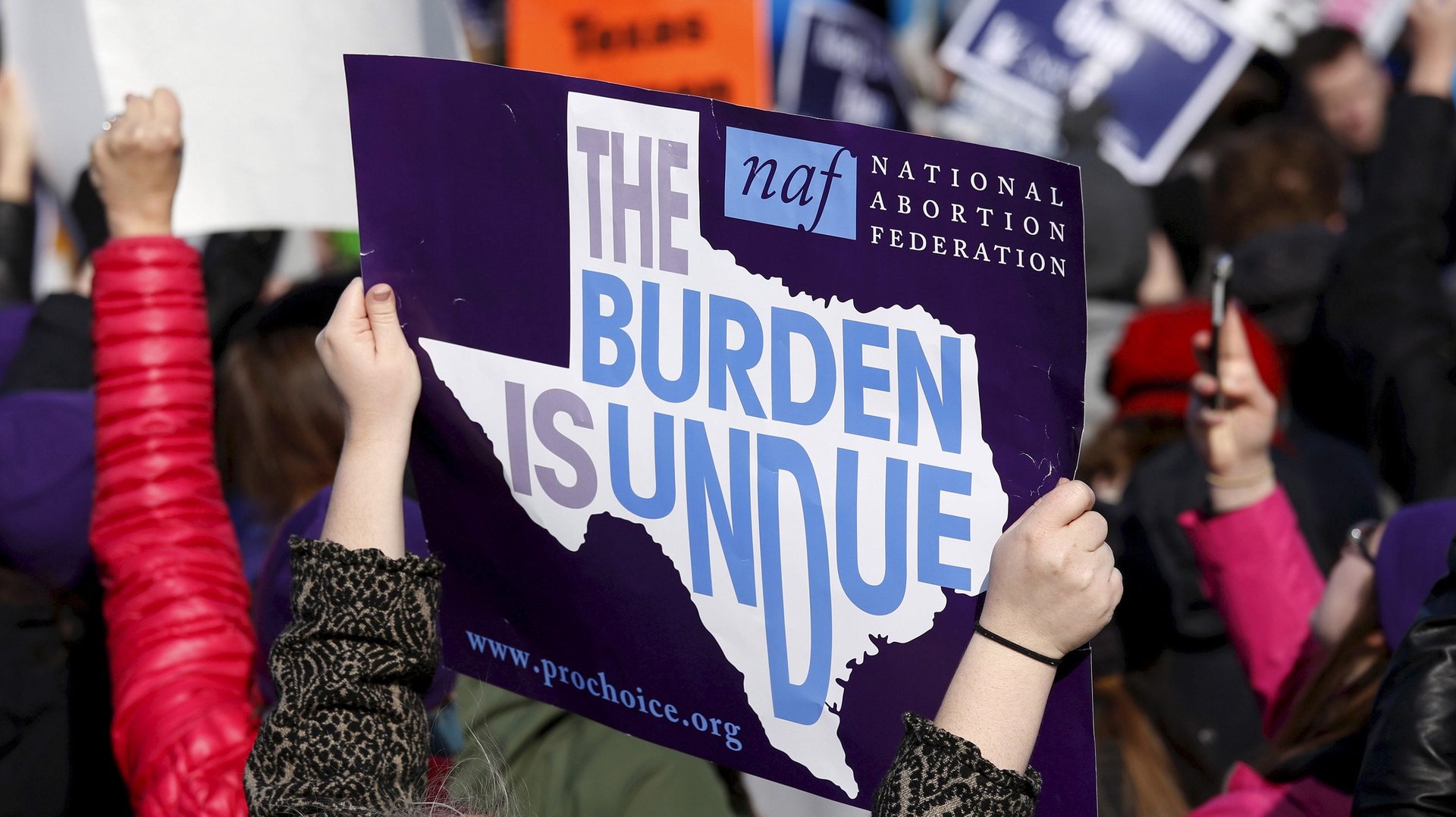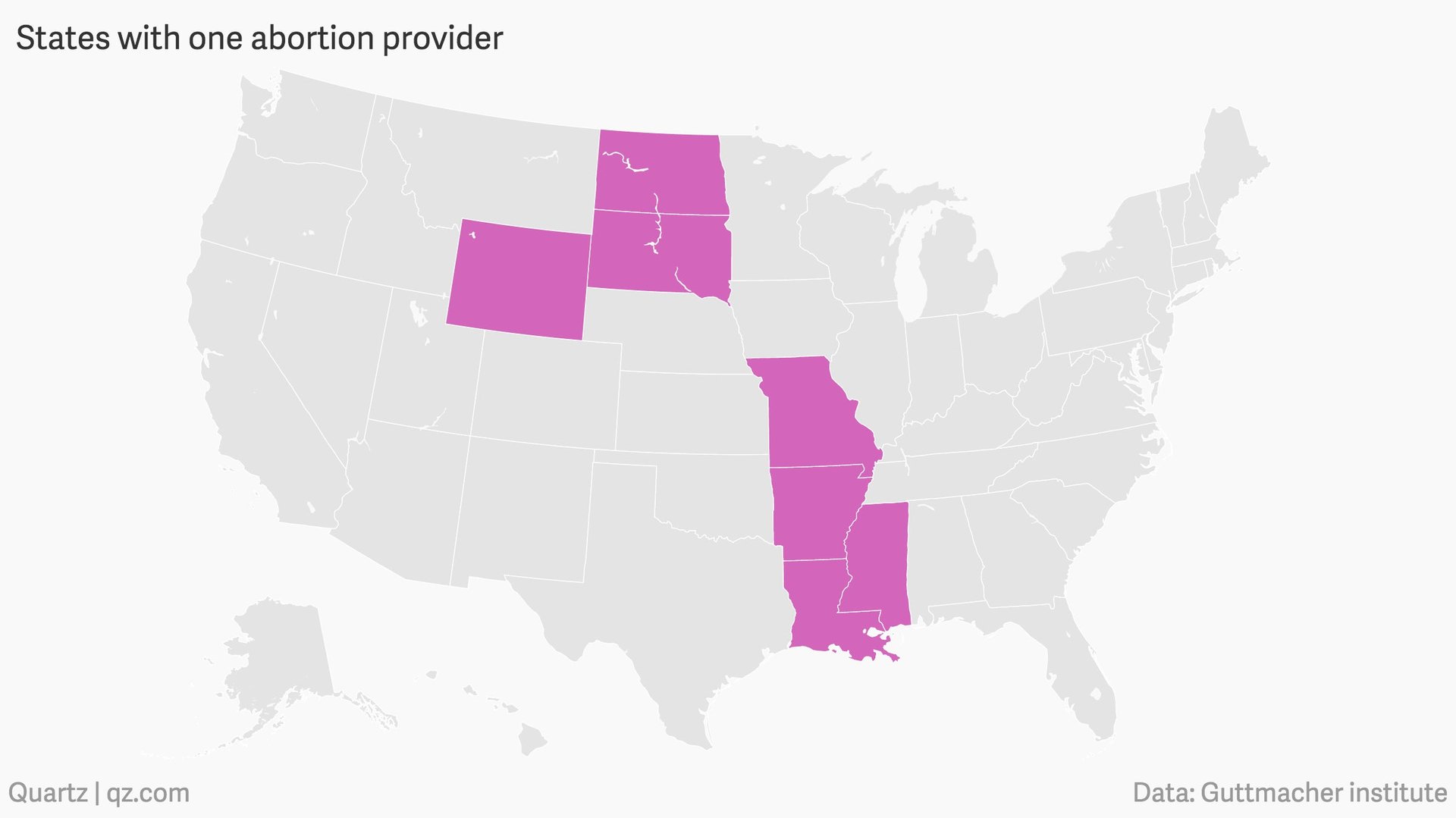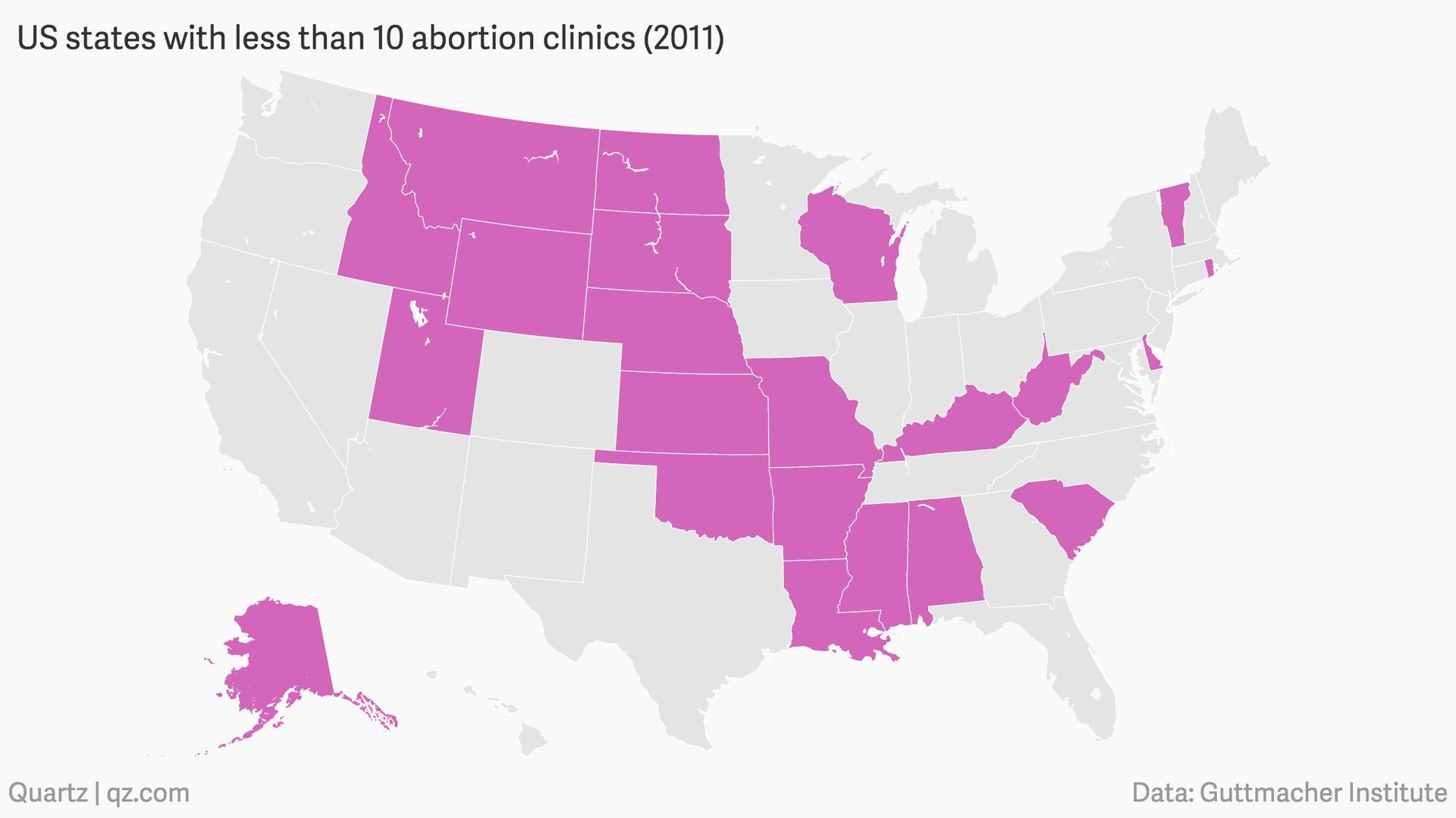Women’s rights in the US may be about to plunge back to the 1960s
A safe and accessible abortion is a human right and, in the US, a right protected by the Constitution. But this hasn’t stopped abortion rights from coming under constant attack, as evidenced most recently by Whole Woman’s Health v. Hellerstedt.


A safe and accessible abortion is a human right and, in the US, a right protected by the Constitution. But this hasn’t stopped abortion rights from coming under constant attack, as evidenced most recently by Whole Woman’s Health v. Hellerstedt.
The case, currently before the US Supreme Court, revolves around abortion access for women in the state of Texas. The disputed law, called House Bill 2 (HB2) was approved by the Texas Republican-majority state legislation in October of 2013. It requires abortion providers to adhere to a long list of conditions in order to keep their practice open. It also adds new regulations that make it a lot more time-consuming, and expensive, for a woman in Texas to obtain an abortion.
If the law is upheld, abortion will effectively become inaccessible for hundreds of thousands of women in Texas. But just as importantly, it will send a dangerous message to states that have been attempting to pass their own abortion legislation. Indeed, regardless of the Supreme Court’s decision, HB2 highlights the depressing plight of women’s reproductive rights in 2016. This is but one battle in a very long war.
The Texas TRAP
HB2 takes a page from the playbook that inspired several similar laws in Ohio, North Carolina, Arizona, Kansas, Tennessee, Indiana, Arkansas, Missouri, and Utah, as well as many other bills that have been repealed or blocked. Known as Targeted Regulations on Abortion Providers, or TRAP laws, these measures are designed to make it almost impossible for providers to stay open.
And they’re effective. Thanks in part to TRAP guidelines, Arkansas, Mississippi, North Dakota, South Dakota, and Wyoming have been reduced to one abortion clinic per state. Other areas of the country are becoming abortion-provider deserts, including a 400-mile stretch between Houston, Texas, and Louisiana’s border.

Meanwhile, the number of states with fewer than 10 abortion clinics continues to rise. Abortion access has vanished at alarming rates in the past five years, according to a report by Bloomberg. Over 160 American clinics have closed since 2011, leaving 30 million women of reproductive age unable to access safe abortions within 25 miles. Incidentally, many of these states are also at risk of Zika, an important and tragic consideration for women who may contract the virus during or immediately preceding pregnancy.
If the Texas law is upheld, the state’s clinics drop to 10, down from 19. (In 2011, Texas had 62 open clinics.) Today, nearly a million women in the state live further than 150 miles from a provider, and over 750,000 live over 200 miles from one. That’s down from 10,000 in 2012 (pdf, p.39).

An interesting aspect of TRAP laws are their brazenness. Politicians have in the past masked their true intentions with talk of health concerns. But footage included in Dawn Porter’s documentary Trapped highlights the extent to which conservative politicians are now openly admitting their ultimate goal: to limit, and eventually deny, a woman’s right to a safe abortion. Indeed, according to the Guttmacher Institute, 24 states now impose unnecessary limitations on abortions that clearly go beyond ensuring a woman’s safety.
Not surprisingly, women of lower income—those who may not be able to afford travel costs, child care or time-off from work— are hit hardest by such laws. Trapped director Porter, who observed abortion practices at length while filming her documentary, says she was struck by the economic barriers these laws erect. She witnessed ”just how hard it would be for people to find $500″ to pay for the procedure—let alone any associated expenses.
“The most important decision in 25 years.”
The Supreme Court decision (expected this month) is arguably one of the most important rulings on women’s rights in many decades. But women’s rights advocates shouldn’t be too surprised—the warning signs were clear. In the years since Roe v. Wade made abortion legal across the US in 1973, the right to safe and available abortions has continuously been targeted. In 1992, a Supreme Court ruling introduced the concept of fetus viability (the ability of a fetus to survive outside the mother’s body) as the limit after which interruptions of pregnancy could be regulated by single states. Because fetus viability is subject to medical discretion and cannot be tied to a quantifiable moment in the pregnancy, the decision has become an excuse to make abortion illegal after the first trimester.
Interestingly, that same ruling stated that state regulations of abortion providers must not cause an undue burden to the woman. It is this phrase that pro-choice advocates are hoping will help repeal TRAP laws. During the case hearing, on Mar. 2, justice Ruth Baden Ginsberg highlighted the hypocrisy of the Texas bill. While they claim to be care foremost about safety, HB2’s authors also seem to believe driving to New Mexico clinics should be considered a valid±and safe—option for Texas women who live too far from providers. As Ginsburg noted (pdf, p. 37):
So if your argument is right, then New Mexico is not an available way out for Texas because Texas says to protect our women, we need these things. But send them off to […] New Mexico where they don’t get it either, no admitting privileges, no ASC. And that’s perfectly all right.
Legal experts remain conflicted, however, on how the court will rule. Many seem to believe it will be a tie, which would uphold the law—yet the expectations are high. “This is the most important decision in 25 years,”Julie Rikelman, a lawyer with the Center for Reproductive Rights, says. Rikelman says the Supreme Court has an opportunity to send a strong message that “these types of laws are unconstitutional.” Although, ”whether or not politicians will again try to sneak around the constitution” is hard to predict.
The battle continues
“You do what you believe in, and I believe [abortion] is a vital service to women, ” doctor Willie Parker, one of the protagonists of Trapped, tells Quartz. A devout Christian, Parker has been performing abortions for 12 years, and has become a pro-choice icon for his outspoken advocacy in southern states. Though he is often threatened by anti-abortion activists, Parker travels between Alabama, Mississippi and Georgia, offering abortions where the right is most threatened.
“It’s a long-standing political strategy since the 1980s,” Parker noted, pointing out that abortion really only became politicized during the administration of president Ronald Reagan. During this period, the Republican party took on the anti-choice cause and abortion became “the litmus test for the conservative party.”
Unfortunately, curtailing reproductive rights has since become a popular campaign strategy on the political right. Even presidential hopeful Donald Trump, whose public views on abortion have changed greatly since he began his campaign, has become outspoken on the topic. In March 2016 he even publicly called for “some form of punishment” for women who have abortions. (Trump has since claimed his statements were misinterpreted.)
But it’s not just America: There are several areas in the world where reproductive rights are being challenged as we speak, in some cases influenced and even funded by US advocates. In Europe, for example, countries such as Germany and Russia have introduced mandatory counseling and waiting periods (pdf, p.4), often with the aim of persuading a woman not to get the procedure. Other countries, for instance Italy, harbor a growing majority of doctors who are refusing to perform abortions outright, seriously limiting its availability (link in Italian).
According to Katrine Thomasen, a legal adviser working with the Center for Reproductive Rights in Europe, this rollback of reproductive rights, often supported by US-funded anti-choice organizations, fits into a larger conservative movement connected to a reactionary strain of nationalism. “It’s what naturally happens in the face of progress,” Thomasen said.
With this in mind, a Supreme Court decision may not actually be enough to halt attacks on reproductive rights. But that doesn’t mean it’s not important—quite the contrary. The precedent alone will provide vital legal reinforcement for pro-choice advocates on the front lines, to say nothing of all of the women whose lives will be directly affected. As Rikelman tells Quartz, ”the battle may continue, but this would be a huge victory for Texas women, and for women throughout the US.”